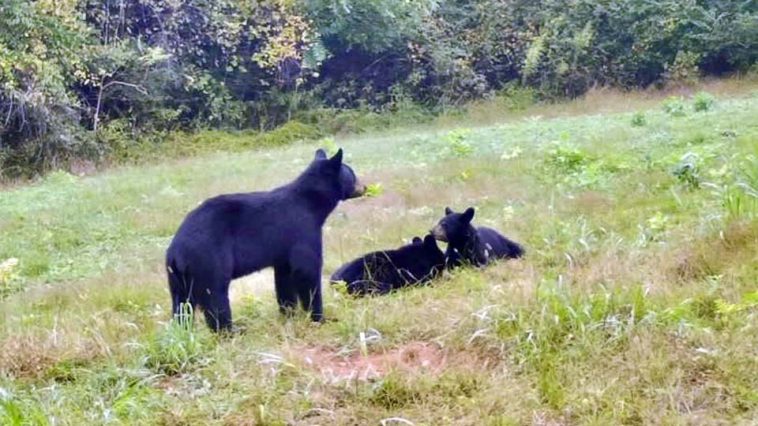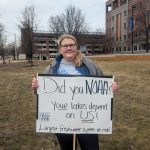
The Resilient Spirit of Greenville: Nature, Urban Renewal, and Community Partnerships
As an editor passionate about travel, adventure, and the art of exploring dynamic communities, I find Greenville’s recent developments a compelling study of both nature’s resilience and modern urban planning. Two significant events—the awe-inspiring Table Rock wildfire and the transformative redevelopment of County Square—illustrate a shared theme: when communities face challenges, they forge ahead with creativity, teamwork, and an unwavering commitment to preserving both their natural and built environments.
Wildfire Survival and Wildlife Resilience: Understanding Southern Appalachian Adaptation
In the wake of the historic Table Rock wildfire, many residents of Greenville expressed mixed emotions, torn between a gratitude for the lives and homes that were spared and concern for the natural world. Dennis Chastain’s insightful commentary on the survival of baby bears in the woods reminds us that nature has its own plan for regeneration. These resilient creatures, far from helpless victims, display adaptive behaviors honed through generations.
Contrary to popular belief, black bears in Southern Appalachia do not truly hibernate. Instead, they enter a state called “winter torpor”—a less profound sleep during which they remain alert enough to respond to environmental dangers. Their instincts, refined over centuries, are a wonderful example of evolutionary adaptation. As the bear cubs venture out with their mothers, the instinct to seek safety is paramount. Their behavior reflects a deep-rooted understanding of natural cues, such as the scent of smoke, that signal an emerging threat.
The long-tail keyword “wildfire management and wildlife survival in Southern Appalachians” captures the essence of this dynamic relationship. Studies of historical land management practices, like Native American controlled burns, reveal that periodic fires have long played a role in shaping healthier forests. These methods, tried and tested by indigenous populations, served to mitigate the risk of catastrophic wildfires. Today’s firefighters, support teams, and aerial asset units continue this legacy by employing strategic methods to protect both communities and wildlife.
When balancing conservation with public safety, Greenville’s local experts underscore that no area within the wildfire’s reach was completely isolated by flame. This allowed animals to find escape routes and maintain the natural cycle of regeneration. As we review the scientific and historical evidence for wildlife resilience, community members can take comfort in knowing that nature—if given thoughtful management—has the adaptive capacity to bounce back even after devastating events.
Sustainable Urban Redevelopment in Greenville: A New Vision for County Square
In stark contrast to the primal drama unfolding in the wild, downtown Greenville is experiencing its own type of rebirth. The redevelopment of County Square is quickly emerging as one of the most significant efforts in Greenville’s recent history. Spanning over 37 acres, this ambitious project is a testament to the city’s proactive approach toward sustainable urban growth.
The long-tail keyword “sustainable urban redevelopment projects in downtown Greenville” perfectly encapsulates this story. Originally perceived as disconnected from Greenville’s vibrant downtown life, County Square is now at the center of redevelopment plans that promise to blend history, natural beauty, and modern urban design. Developers are seizing the opportunity to rebuild from the ground up on a former county-owned property that once housed outdated county operations. The possibilities for creating a smart, walkable urban environment are endless.
Expert voices, such as Nancy Whitworth, the City of Greenville’s deputy city manager, highlight the sensitive relationship between County Square, nearby Falls Park, and essential community resources like the Fluor Field and the Swamp Rabbit Trail. Their vision involves establishing a “triangle of activity” with Main Street and the West End, an urban corridor that encourages pedestrian-friendly design, enhanced green space, and traffic-calming measures. With an estimated billion-dollar investment projected over the next decade, County Square is not simply an extension of downtown—it is a living laboratory for urban innovation.
Traffic management is a paramount concern in such transformative projects. Urban planners stress that when activity density increases, so does the strain on existing infrastructure. It is essential to integrate multi-modal transportation options, including clearly marked walking routes, bicycle paths, and perhaps even enhanced public transit connections that echo the historical significance of Greenville’s development initiatives. Ensuring that pedestrian access remains prioritized will help maintain the city’s reputation as both a business hub and a welcoming destination for visitors.
Community-Driven Public-Private Partnerships: Reimagining Urban Parks and Recreational Spaces
Complementing the forward-thinking redevelopment of County Square is the rise of vibrant community spaces like the Greenville Cancer Survivors Park. The park began as an initiative born of community need and transformed into a beacon of hope—both literally and figuratively—through public-private partnerships. Over the course of nearly two decades, a vision that started as a high school project has blossomed into a multi-faceted space that celebrates life, resilience, and recovery.
The long-tail keyword “community public-private partnerships for urban park development” conveys the collaborative essence of this effort. As public investments merge with private donations and community engagement, urban parks are evolving beyond simple recreational spaces. They have become hubs of cultural expression, wellness programs, and opportunities for local celebrations. At the Cancer Survivors Park, visitors can participate in walking tours, yoga classes, and arts-and-crafts sessions that underscore the park’s holistic approach to well-being.
The role of private partners in such projects cannot be overstated. While municipalities provide vital funding—as exemplified by the $20 million earmarked from hospitality tax revenues in Greenville—private organizations and philanthropic donors help meet the remaining financial requirements. This blended approach to financing not only ensures that projects are viable but also strengthens the social fabric of the community by aligning diverse interests towards a common goal.
Public-private partnerships, when executed effectively, bring a wealth of resources and innovative thinking to city planning. They are reminiscent of celebrated projects such as Chicago’s Millennium Park where forward-thinking collaborations have turned infrastructural challenges into signature attractions. Just as Millennium Park now draws millions of tourists annually, Greenville’s community parks—built through the joint efforts of the public sector and private citizens—can serve as dynamic focal points that boost tourism and local morale.
Integrating History, Culture, and Modern Design: The Future of Greenville’s Urban Experience
Both the recovery from the Table Rock wildfire and the redevelopment efforts of downtown Greenville serve as compelling narratives of transformation. Greenville’s story is one of blending the enduring lessons of the past with the promise of future innovation. The interplay between nature’s resilience and urban adaptability demonstrates how communities can thrive despite adversity.
History teaches that the land itself offers guidance. The controlled burns of Native American ancestors, which helped shape the Southern Appalachian woodlands, remind us that human intervention and natural processes are not at odds if managed wisely. Today, similar principles underpin the urban redevelopment strategy of County Square. The focus is on creating sustainable spaces that nurture vibrant communities while respecting the natural environment.
With the infusion of modern urban design strategies, architects and city planners are exploring innovative solutions to merge historical context with new-age technology. Thoughtful urban planning that encourages walkability, promotes green spaces, and integrates multi-modal transit is at the heart of this transformative period. In this context, the long-tail keyword “innovative urban planning for sustainable community growth in Greenville” becomes a rallying cry for developers, planners, and citizens alike.
Addressing concerns about traffic, parking shortages, and infrastructure strain, city officials are engaging with experts in city planning to propose alternatives that favor pedestrian mobility and community connectivity. Decisions about green space preservation, waste management, and integrated transit will ultimately influence how future generations experience Greenville. The goal is to create an urban environment where safety, beauty, and efficiency coexist harmoniously.
Moreover, these changes are not just about aesthetic or environmental benefits—they hold significant cultural and economic implications. As visitors to Greenville find themselves greeted by safe neighborhoods, thriving parks, and an urban layout that celebrates both history and innovation, the city’s identity is reinforced. This blend of culture, commerce, and nature is at the core of Greenville’s growing reputation as a destination that offers both adventure and a high quality of life.
Lessons in Leadership and Collaboration: A Model for Future Community Development
What do these intertwined narratives—the survival instincts of local wildlife and human innovations in urban redevelopment—tell us about leadership? In both the natural and built environments, success hinges on effective collaboration and forward-thinking leadership. Leaders on the frontlines of wildfire control, urban planners orchestrating complex redevelopment schemes, and local citizens contributing to community projects all share a commitment to a common goal: building a sustainable, inclusive, and resilient community.
The long-tail keyword “leadership in sustainable community development and public-private partnerships” encapsulates the qualities that have driven Greenville to this point. When a community faces a crisis, such as a massive wildfire or the challenge of integrating a sprawling urban project, the response is not to retreat but to harness collective strengths. In Greenville, the response has included rigorous planning, transparent communication, and supportive collaboration among various stakeholders—from municipal authorities to local residents.
Observers of Greenville’s development model can draw vital lessons from these events. First, effective leadership involves listening to both experts and community voices. It means understanding that issues such as animal safety during wildfires are as crucial as the fiscal responsibilities tied to urban redevelopment. Second, collaboration between public and private sectors can generate solutions that neither could achieve alone. When combined with proactive urban planning that respects historic context and natural beauty, the potential for positive change is immense.
Finally, the story of Greenville is a testament to the power of adaptability. Life in the modern world is replete with challenges—from environmental disasters to the evolving needs of urban populations. Yet within these challenges lies the opportunity for growth. As Greenville continues to navigate these complexities, it builds a blueprint that other cities might well consider emulating.
Embracing a Future of Balance Between Urban Innovation and Natural Preservation
Ultimately, Greenville’s journey is one of balance—a balance between preserving the integrity of nature while embracing the evolution of urban spaces. The table is set for a future where resilient wildlife coexists with sustainable, bustling urban centers. As an avid traveler and observer of dynamic communities, I see Greenville as an example of how cities can thrive in a rapidly changing world by leveraging local history, ecological wisdom, and cutting-edge urban design.
For the adventurer and the urbanite alike, Greenville offers something uniquely enriching. Whether you are exploring the paths along the Swamp Rabbit Trail, marveling at the revival of historic lands in County Square, or participating in community events at the Cancer Survivors Park, you are witnessing a cohesive effort to harmonize modern living with the enduring natural world.
As we look ahead, let us take inspiration from Greenville’s smart urban environment—a clean slate where thoughtful design, public-private partnership, and the stewardship of nature create a thriving community. The lessons learned here are universal, urging municipalities and citizens everywhere to embrace change, value collaboration, and work tirelessly to preserve the essence of community spirit.
In closing, Greenville’s story is not just news—it is a living narrative about resilience, innovative leadership, and the relentless pursuit of a better future. For travelers, investors, and residents alike, this resilient spirit offers a roadmap for growth that combines the rugged beauty of nature with the pulse of modern urban innovation.
With each new chapter, Greenville reminds us that our shared future depends on smart planning, mutual support, and a deep respect for both the environment and the built landscape. And as we travel, explore, and invest in such communities, we are not just visiting a destination—we are becoming part of an ongoing story of transformation and hope.
Originally Post From https://greenvillejournal.com/outdoors-recreation/baby-bears-and-the-table-rock-wildfire-field-notes-with-dennis-chastain/
Read more about this topic at
Renest and Renewal Campaign
Theme 2: Community Action

